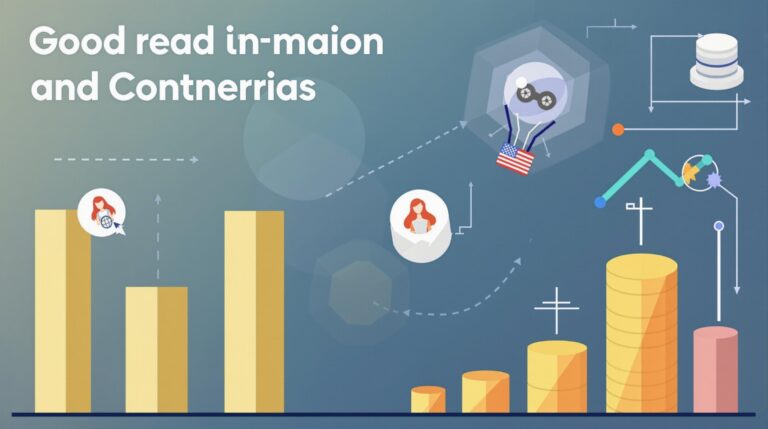Case Study: How One Small Business Boosted Conversions by 200% Using Content Automation
Sportique, an active lifestyle ecommerce brand, transformed their business through strategic implementation of location-based content and two-step opt-in campaigns that resulted in a remarkable 200% boost in conversions. Their content automation success story demonstrates how even small businesses can leverage intelligent automation to dramatically improve customer engagement and drive significant revenue growth without creating new marketing materials.
Key Takeaways
- Implementing geolocation-based content and two-step opt-ins tripled email list growth for Sportique
- Strategic placement of automated content triggers achieved 79% conversion rates on checkout pages
- Two-step engagement using MonsterLinks delivered 58% conversion compared to only 4.92% with static popups
- Small positioning changes and continuous testing of automated elements compounded into significant gains
- The ROI of AI and automation tools proved transformative without requiring new marketing content
Meet Sportique: The Challenge Behind the Transformation
Sportique operates as a globally curated ecommerce platform specializing in adventure-focused apparel and gear for active lifestyle enthusiasts. Their primary business goal was growing their email subscriber base to nurture long-term customer relationships, which is fundamental for sustainable ecommerce growth.
Despite having quality products and a clear brand vision, Sportique faced a common small business challenge: their standard 10% discount offer for email signups converted only 4.92% of visitors. This underwhelming performance indicated their marketing assets weren’t being leveraged effectively, leaving significant conversion potential untapped.
The company needed a solution that would maximize their existing marketing resources while delivering more personalized experiences to their diverse customer base. This marketing automation case study reveals how they achieved dramatic results through smart implementation rather than increased spending.

The Two-Pronged Automation Strategy
Sportique developed a sophisticated automation approach centered on two key technologies: geofencing and two-step opt-ins. First, they implemented geofencing technology to exclude San Francisco visitors from seeing generic discount popups. Instead, these local customers received targeted promotions featuring UberRush local delivery services—content that was specifically relevant to their location.
The second prong of their strategy involved deploying MonsterLinks, which are click-triggered popup elements that create two-step engagement flows. Unlike traditional popups that appear automatically (and often disruptively), MonsterLinks only activate when a visitor actively clicks on them, indicating higher intent.
This shift from interruption to invitation made a dramatic difference. The click-triggered popups increased conversions to 58% compared to just 4.92% with static popups. By implementing these automation tools and strategies, Sportique transformed their customer acquisition approach without creating additional marketing content.
Technology Toolkit: How Sportique Automated Their Content
At the core of Sportique’s transformation was the OptinMonster platform, which enabled sophisticated geofencing, MonsterLinks, and dynamic popup triggers. This platform served as the technical foundation for their location-based content delivery system.
The company integrated the UberRush API to highlight local delivery options specifically for San Francisco customers, adding genuine value to these geotargeted interactions. Custom CSS designs created sticky, attention-grabbing MonsterLink tabs throughout the site, ensuring visibility without becoming intrusive.
What made this approach particularly efficient was how the automation rules reduced manual segmentation work while maintaining personalized experiences. The technology handled the complex task of delivering the right message to the right customer at the right time—the holy grail of effective marketing.
This sophisticated yet straightforward implementation demonstrates that measuring ROI on content automation isn’t just about tracking tools used, but about how creatively businesses implement those tools to solve specific challenges.
Cart Page Optimization: Where 79% of Visitors Converted
The most impressive results came from Sportique’s checkout page optimization. MonsterLinks strategically placed on these high-intent pages achieved an astounding 79% conversion rate—a figure that far exceeds industry standards. These results demonstrate the power of timing and placement in content automation.
The two-step opt-in process was particularly effective because it naturally filtered for high-intent users. By requiring an initial click followed by a form completion, Sportique ensured they were capturing genuinely interested prospects, maximizing not just conversion quantity but quality.
Continuous A/B testing of popup placement, timing, and messaging allowed the team to refine their approach over time. Even small positioning changes of the MonsterLink tab compounded into significant gains. The team discovered that:
- Corner placements outperformed center-screen placements
- Color contrast between tabs and background increased visibility
- Action-oriented language in the MonsterLink triggered more clicks
- Timing the appearance after 45 seconds improved engagement rates
This meticulous optimization process turned their checkout pages into powerhouses for business conversions, demonstrating the potential of strategic content automation.
Measuring Success: The Numbers Behind the 200% Uplift
The impact of Sportique’s content automation approach is best understood through the remarkable metrics they achieved. Email list growth tripled month-over-month after implementation, creating a sustainable foundation for long-term customer relationships and recurring revenue.
The 79% conversion rate for visitors using MonsterLinks on checkout pages represented a massive improvement over industry averages. These highly engaged subscribers were more likely to complete purchases and become loyal customers, impacting both immediate sales and customer lifetime value.
Overall, Sportique saw a 200% increase in conversions across all their automated campaigns. The comparison data tells the story clearly: 58% conversion via MonsterLinks versus just 3% for standard popups in similar placements.
These results validate Sportique’s strategic approach to content automation. Rather than simply increasing the frequency of generic messages, they focused on making each interaction more relevant and valuable to specific audience segments, proving that content automation success comes from quality, not quantity.
The Power of Personalization Over Generic Promotions
At the heart of Sportique’s success was their recognition that personalized experiences dramatically outperform generic promotions. Geolocation data allowed them to segment audiences automatically and deliver tailored messaging without manual intervention.
San Francisco customers responded much more strongly to local delivery options than to generic discounts, demonstrating that relevance often trumps monetary incentives. This targeted content delivery didn’t require creating new marketing collateral—it simply presented existing offerings in more contextually appropriate ways.
The personalized approach maintained brand consistency while significantly improving relevance. This balance is critical for small businesses that need to maintain a cohesive brand identity while maximizing engagement.
By focusing on how content is delivered rather than just what content is delivered, Sportique transformed their conversion rates without expanding their marketing budget. This approach aligns perfectly with setting up automated campaigns that convert effectively.
Lessons for Small Businesses: Implementing Your Own Automation Strategy
Sportique’s journey offers valuable insights for other small businesses looking to leverage content automation. First, start small—test geofencing in one city before scaling to multiple locations. This targeted approach allows for controlled experimentation and refinement before wider implementation.
Audience segmentation through geolocation and behavioral triggers consistently outperforms one-size-fits-all content. The data clearly showed that even simple segmentation criteria can dramatically improve engagement rates.
Progressive engagement through two-step campaigns effectively filters high-intent users, improving both conversion rates and lead quality. This approach reduces database bloat while increasing the percentage of engaged subscribers.
Continuous testing is essential for refining automation workflows. Sportique’s commitment to optimization meant that their results improved over time rather than plateauing or declining as audiences became accustomed to their tactics.
Similar success has been seen by other small businesses like AMR Hair & Beauty, which achieved 200% sales growth via Shopify automation according to Flobot. This pattern suggests that content automation isn’t just a luxury for large enterprises—it’s a powerful, accessible tool for businesses of all sizes.
Sources
optinmonster.com – Active Lifestyle Brand Marketing Case Study
contentmarketingfactory.com – 10 Content Marketing Tasks to Automate Right Now
flobot.co – Transform Brand Automated Content








